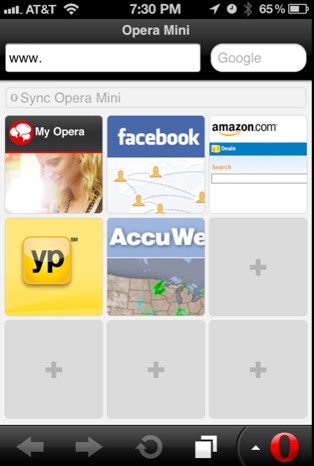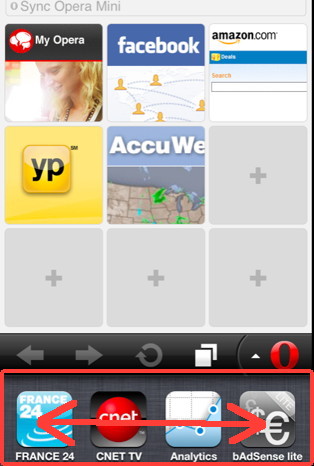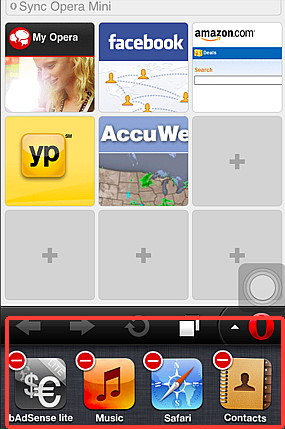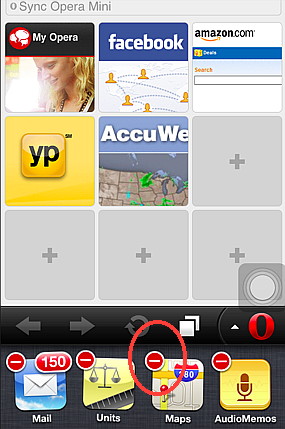
- HOME
- iPhone Generations
- iOS
- iOS 8 Best Features
- Siri
- iOS Music
- iPhone News
- iPhone Specs
- iPhone SMS
- iPhone Applications
- iPhone Video
- AirPlay
- iPhone TV
- iPhone Network
- iPhone GPS
- iPhone Ringtones
- iPhone Tips
- iPhone Sys Tricks
- iPhone Emulators
- iPhone Hacks
- iPhone Customization
- iPhone Accessories
- Cheap Calls
- Buy iPhone
- Arabic iPhone
- Hot Topics
- Privacy Policy
- Site Search

iOS 4 MultitaskingiOS 4 Multitasking was one of the most requested feature on the iPhone since its original release in 2007. Although many people thought that the original iPhone 2G/3G and iPhone 3GS didn't multitask, the fact was that the iPhone did always multitask but only with specific applications. Multitasking in short means the ability to do two or more things at the same time. You were always able to do multiple things at the same time even with the older generations iPhone running iOS 2.0 or iOS 3.0. For example, you were always able to listen to your music while browsing the internet with iPhone Safari, or while reading your email. You were also able to to run an iPhone GPS application such as Navigon or TomTom to get directions while listening to your favorite albums in the background.
Therefore, even the early stages of the iPhone software supported multitasking before iOS 4 but it was limited to some default iPhone applications from Apple.
Types of Multitasking:There are two types of multitasking available on the iPhone that I will discuss here in this page. Native multitasking is a feature that was introduced in iPhone OS 4.0. Another iPhone multitasking method is also available through jailbreaking and running backgrounder, I call it backgrounder multitasking. Of course you need to jailbreak your iPhone first in order to install Backgrounder from Cydia.
Native Multitasking:Native iOS 4 multitasking was introduced by Apple with the release of the iPhone 4. There were seven components of the iOS 4 multitasking, Background audio, Voice over IP, Background location, Push notifications, Local notifications, Task finishing, and Fast app switching. An iPhone application developer can choose to enable or disable any of those seven native multitasking components. Once you start an application, and then press the home button to close it, it actually goes to the background. You can run as many iPhone applications, and simply send them to the background by tapping the home button. To switch between running applications, you can simply double press the home button to get the task switcher dock. Now, you can scroll through all the running iPhone applications by swiping your finger left or right as shown below.
Advantages of Native iOS 4 Multitasking:The advantage of native iOS multitasking is that the application developer has full control over his application. He can enable any of the seven native multitasking components mentioned above to minimize iPhone CPU usage, iPhone memory and boost iPhone battery life. The result is a very stable iOS and a long lasting iPhone battery. The native iPhone multitasking is so smart that you would never run out of memory, and you would never really need to close your running applications. When you close a game, and switch back to it two days later, you would return back to the same spot you left. Moreover, when you close an iPhone note while you are in the middle of writing something, you would get to exactly where you left. Or if you are in the middle of typing an email, and then you close the email application, then you will be ready to continue your email. If you like to completely close any of the running applications for any reason, simply tap and hold your finger on any application in the task switcher dock. Once the apps start wiggling, you can then tap the minus (-) button to completely close that application.
Disadvantages of Native iOS 4 Multitasking:Although native multitasking is great, and definitely better than no multitasking at all, it still lacks some capabilities. For example, iPhone video applications such as Youtube, or NetTV can't play in the background. There is no user control over native multitasking, it is whatever the application developer decides to enable or disable. Most of the time, you will end up with tens of applications sitting in the task switcher dock. Closing those applications in the task switcher dock one by one can take time. A "close all running applications" feature, and more control over native multitasking would have been a nice addition.
Backgrounder Multitasking:The second type of multitasking on the iPhone is enabled by jailbreaking and running an iPhone hack called Backgrounder. With backgrounder you have full control of how you want to multitask. For example, you could force an application to completely close when you press the home button, or keep it running in the background. Advantages of Backgrounder Multitasking:With backgrounder multitasking, almost any iPhone application can be forced to run in the background no matter what it does. Even a game could be forced to stay running in the background. Running in the background here doesn't mean that the game would freeze in the background, and then resumes like the native iOS 4 multitasking. However, when you background a game with backgrounder, the game will actually stay running as if you were still playing it in the background using all its resources. Therefore, when you background a video application such as NetTV, or OrbLive, the app would still play its video in the background while you are browsing the internet with iPhone Safari. A big advantage over native iOS multitasking. Visit the backgrounder page to learn about the level of control you would get with backgrounder multitasking. And how you can take advantage of both native iOS 4 multitasking and backgrounder multitasking at the same time to get the best multitasking experience on your iPhone. Disadvantages of Backgrounder Multitasking:If backgrounder is not used correctly and efficiently, you could easily drain your iPhone battery, or experience iPhone memory problems. If you use backgrounder multitasking all the time, your iPhone would run slower, and its performance would suffer causing an iPhone freeze or restart. Therefore, you must be careful when using backgrounder, and you should monitor what applications are running in the background. It is best to use backgrounder multitasking with only specific iPhone applications, while leaving native multitasking as the default.
Return from iOS 4 Multitasking to iPhone Software Return to Home of iPhone Tips and Advice
blog comments powered by Disqus
|




